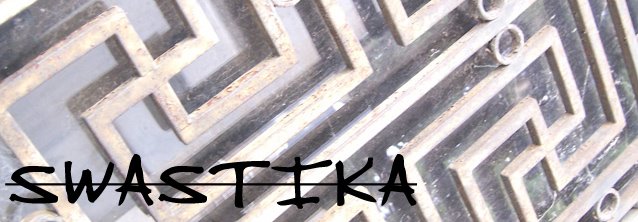Jargal-swastika ; PI Kutenkov
PI Kutenkov gathered enormous material - the result of the study of the spread of the swastika in the Novgorod land, Vologda, Tver, Arkhangelsk, Vyatka, Kostroma, Perm, Baikal and the Altai and described it in his book "Jargal-swastika - a sign of Russian folk culture." In it, he leads the table in which the reduced characteristic mark of swastikas used in Russia in the period from I to XX centuries. BC
Swastikas which were used in Russia, there are more than 144 species. They come in different colors and shapes, with different numbers of rays and different directions. Until relatively recently, the swastika was the most widespread and deeply revered symbol that has been used in Russia for millennia.
By the way, that in almost all foreign languages images solar symbol (which very few species) are called in one word "swastika", and in the Russian language different variants of the swastika there, as we have noted, 144 species, and the same names as the language of our ancestors, Slavic-Aryan was much richer, deeper and more complex modern. Here are some of the names of the swastika: Posolon, holy gift, Solntsevrat Agni, Solar Cross, Solard, light-years, Flower Fern Perunov Color, Bogovnik, Svarogich, Svyatoch, Yarovrat, Odolen-Grass Rodimich, Charovrat, Swasti, Fache, Mara, Ingle , Vedara, Swati, Race, etc. And, of course, Kolovpat - a symbol of the rising sun-Yarily, symbol of eternal victory of light over darkness, and eternal life over death. Kolovrat Color also plays important: fire, symbolizes rebirth, heavenly - Update, black - change. Different orientation of the swastika correlates with the rising and setting sun, and fall asleep with the awakening of nature rather than confrontation of good and evil, light and dark.
Villagers called a swastika on his own. In Tula province called her "feather". Peasants Pechora - "hare" (as a sunbeam), in the province of Ryazan nicknamed her "horse", "horse head" (the horse was considered a symbol of the sun and wind), in Nizhny Novgorod - "Ryzhik", "loach" in Tver province, "bowlegged "Voronezh. In Vologda land it was called variously "hooks", "kryukovets", "hook" (Syamzhenskiy, Verhovazhsky areas), "steel", "ognivets", "konegon" (Tarnogskii, Nyuksensky areas), "synchronize", " Cricket "(Velikoustiugskii district)," vozhok "," leader "," Zhgoon "(Kichm.-Gorodetsky, Nikolsky areas)," bright "," shaggy bright "," unkempt workman "(Totem district)," jibs " "Chertogon" (Babushkinskiy district), "Haymaker", "kosovik" (Sokolsky district), "crossing", "vratok" (Vologda, Gryazovetsky areas), "vrashenets", "vrashenka", "vraschun" (Sheksninsky, Cherepovets areas ), "ugly" (Babaevsky district), "miller" (Chagoda district), "krutyak" (White Lake, Kirillov areas), "flaming" (Vytegorskiy district).
Amazing ancient ornaments performed oberegovuyu function together with unmistakable aesthetic, which was important to all - and the location of embroidery (shoulders, neck, hem, etc.), color, yarn selection, etc. Solar ornament symbols, and indeed any other sign, carried them some meaning, writing a kind of message, which could only decipher the man in charge, of which, unfortunately, is not left. But in the second half of the XIX century in some villages of Russian Sage-old woman lived, who knew how to "read" by embroidered ornament ...






No comments:
Post a Comment